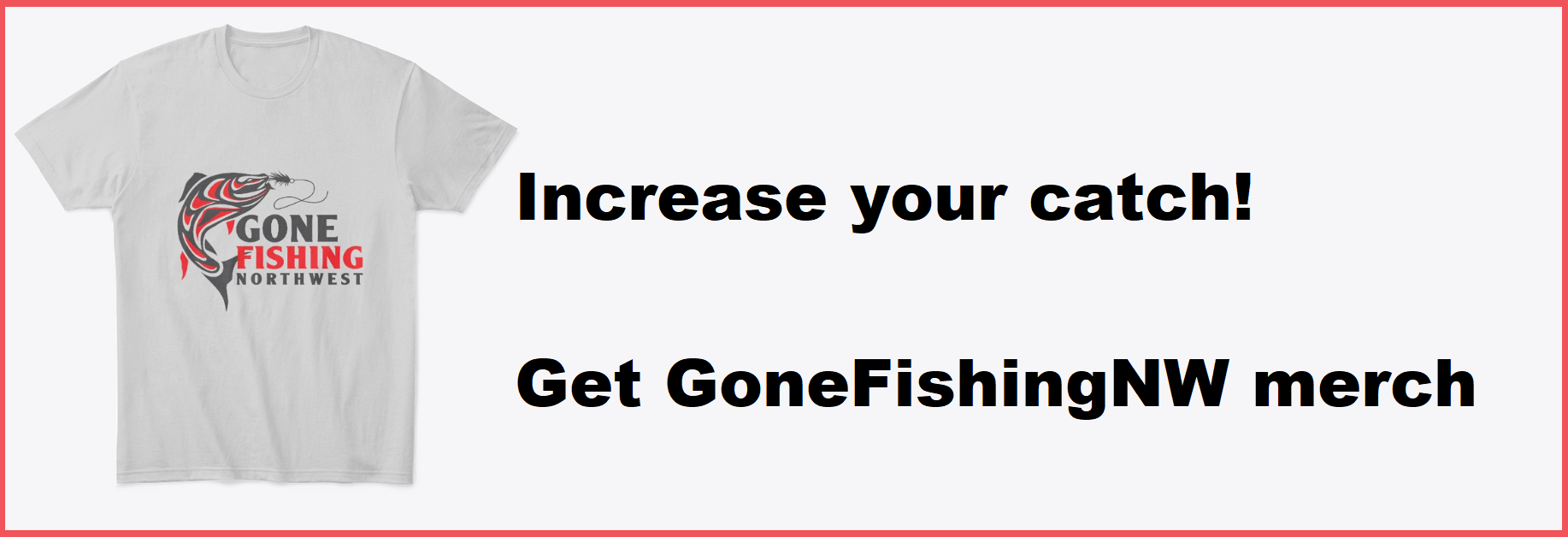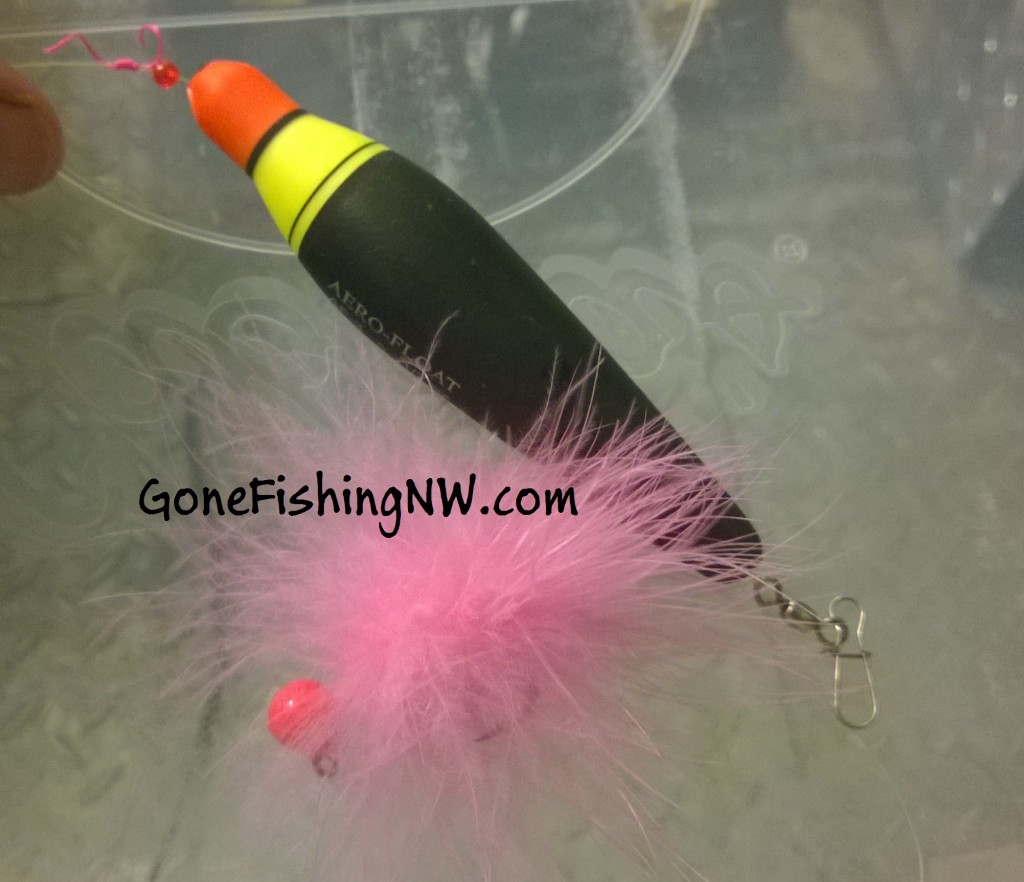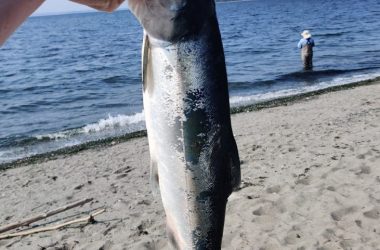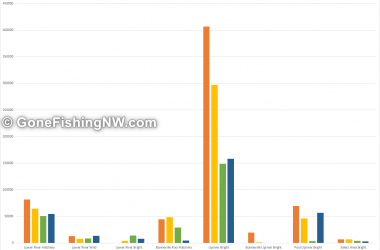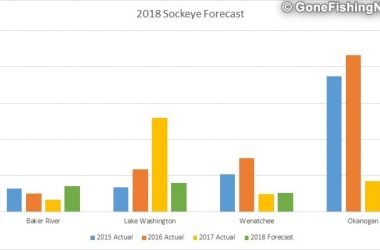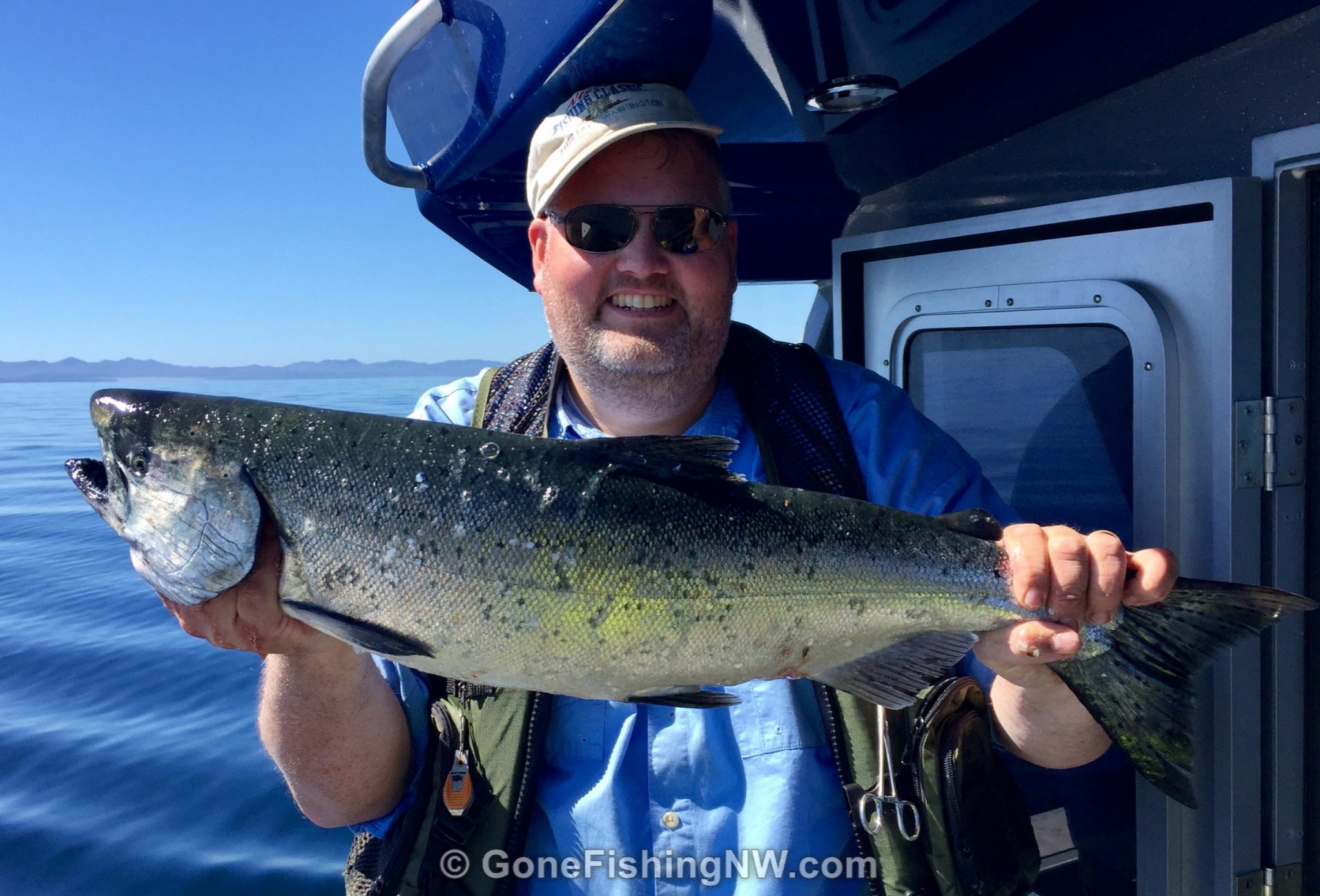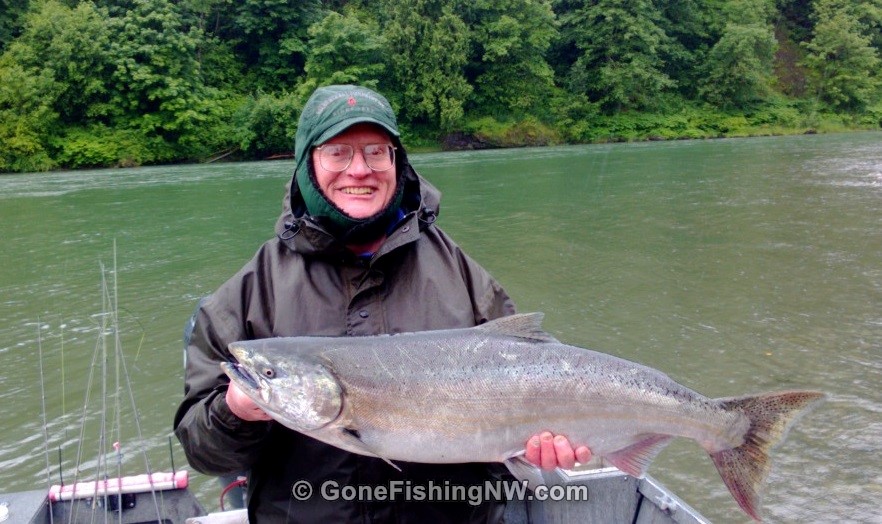Float fishing is great technique for beginners as bites are obvious and it involves less casting than other methods. It can be a very effective method for fishing for pink salmon, as well as other species.
Float fishing can be used to target both holding water and traveling water – making it a very versatile setup. I love the thrill of the float quickly dipping underwater as the fish takes the lure.
Rod and Reel
Longer rods are preferred for float fishing, as they allow you to keep more of the line off the surface of the water – helping ensure a good drift. It isn’t uncommon to see serious float fishermen with 10 to 13 foot rods (usually with center pin reels).
However for most purposes you can do just fine with a 9 foot rod, rated for 8-15# line, moderate action. In other words a typical steelhead rod.
Both spinning and casting models work fine.
Terminal Tackle
For tackle you’ll need some kind of float. While the red and white round bobbers from your youth can be used, you’ll find it much easier and effective to use an adjustable river float.
These floats usually come with a few bobber stop knots and some beads. If not then you can buy these separately.
You put the bobber stop knot on your mainline – transferring it from the tube to the mainline carefully, and then tightening it down snug. With a moderate amount of pressure you should be able to move the knot up and down your line.
Then thread on a bead, followed by the float. Then finish up the setup by adding another bead and tying on a snap swivel.
You’ll notice the float (and beads) can travel up and down the fishing line – stopped on the bottom by the swivel and at the top by the knot.
The great things about this setup is:
- You can adjust the depth by sliding the knot up and down the line
- You can reel that knot all the way through the guides and onto the reel – if needed – so you don’t have to start your cast with a ton of line already out
Then add a leader – usually 3 to 5 feet. At the end of that leader you can attach a few different options:
- A jig, especially a twitching jig with lots of flowing material
- A hook and small cheater weight. To this setup you can add a bit of bait, like coon shrimp or sand shrimp.
How To Fish Holding Water
Holding water for pinks is usually slow moving. As such the current will not move those flowing material for twitching jigs very well. So the bait option works best for this.
Take a guess on the depth and set your bobber stop appropriately, so your offering is about 1 foot off the bottom. It make take some experimenting to get the depth right. The float laying on its side is a good indicator that the weight is resting on bottom.
Cast it out and let it sit there. If the current moves it out of position, then reel in and recast.
When a fish strikes usually it will pull the float under. However sometimes it will move oddly in some direction.
When anything like that happens, take in the slack and set the hook.
How To Fish Traveling Water
Traveling water is going to be moving water. Both jigs and bait work well in this scenario.
Like other river salmon fishing it is key that the lure get near the bottom, so experiment and adjust that bobber stop until you are confident you are in the zone.
The main difference from float fishing holding water, is that the current will take your float downstream. How far downstream depends on available room, your eyesight and how far out you feel you can effectively fight and land the fish.
Just cast out in the current you want to fish and watch the float go downstream. You can feed it additional line, as needed, if you want.
Once you’ve reached the maximum distance you want it to go, then reel it back in and recast.
If you see the bobber go under or start moving funny, then reel in any slack and set the hook.
Please see these additional tips, rigs and advice for fishing for pink salmon.

